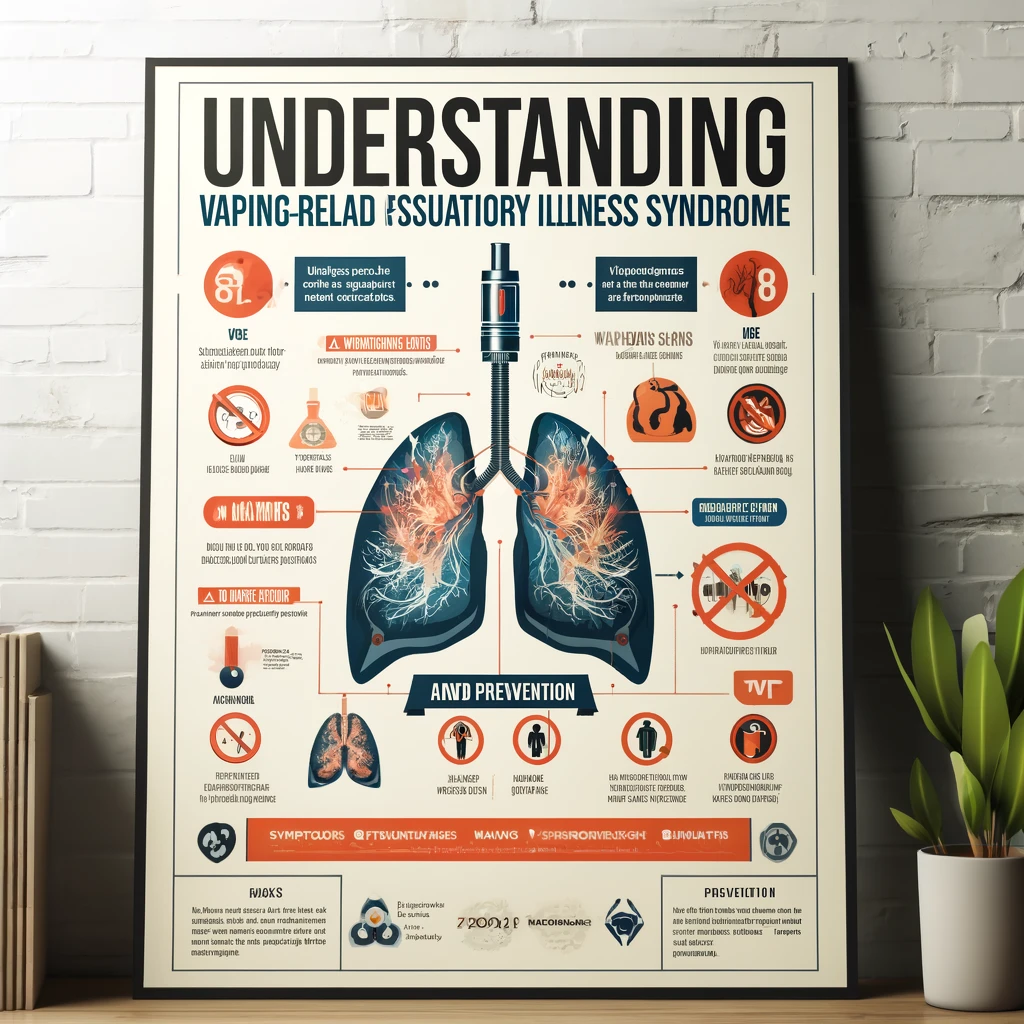
Vaping-Related Respiratory Illness Syndrome (VAPIS) is a significant health concern associated with the use of electronic cigarettes (e-cigarettes) and vaporizers, which are often used to inhale nicotine, flavored liquids, and, increasingly, cannabis products. The rising popularity of vaping as an alternative to traditional smoking has brought with it a surge in cases of respiratory illnesses linked directly to this practice. VAPIS encompasses a variety of pulmonary conditions that may arise from or be exacerbated by the inhalation of aerosols produced by vaping devices.

Vaping devices work by heating a liquid to generate an aerosol.
Vaping devices, which include e-cigarettes and vaporizers, operate by heating a liquid—typically containing nicotine, flavorings, and other chemicals—to a high enough temperature to vaporize it. The resulting aerosol is then inhaled by the user. This process does not burn the material, avoiding some of the harmful byproducts of combustion present in traditional cigarette smoke. However, it does create other potential risks, as the heated aerosol can contain new and harmful substances that pose significant health risks when inhaled.

The term VAPIS was coined to describe a range of respiratory conditions that have been observed in individuals who vape. These conditions can vary widely in their presentation and severity but commonly include symptoms such as coughing, shortness of breath, chest pain, and in severe cases, acute lung injury. The syndrome has been a focus of medical research and public health investigation, particularly after outbreaks of severe respiratory illnesses among vapers were reported in various regions.
The exact mechanisms by which vaping induces respiratory illness are not fully understood, but several potential causes have been identified. These include the inhalation of chemical irritants present in vape liquids, such as diacetyl, which was famously associated with “popcorn lung” in workers exposed to it in microwave popcorn facilities; heavy metals like nickel, tin, and lead that may be emitted from the heating coils of vaping devices; and other toxicants formed during the heating process.$Additionally, certain additives used in vaping liquids can be particularly hazardous when vaporized and inhaled. Vitamin E acetate, often used as a thickening agent in THC-containing vape products, has been implicated in numerous cases of lung injury. When inhaled, this substance is thought to interfere with normal lung function, leading to a condition known as lipoid pneumonia, a rare and serious form of lung injury caused by the aspiration or inhalation of fats.
One of the challenges in diagnosing and treating VAPIS is that the symptoms can mimic those of other respiratory diseases, such as bacterial or viral pneumonia. This can lead to delays in proper treatment and prevention measures. Health professionals often have to rely on patient histories of vaping and the exclusion of other potential causes to identify VAPIS, which can complicate public health responses to outbreaks.
The treatment for VAPIS varies depending on the severity of the condition but typically includes cessation of vaping, the use of medications to manage symptoms, and in some cases, hospitalization if severe lung damage has occurred. Corticosteroids have been used to reduce lung inflammation in some patients, and oxygen therapy may be necessary for those experiencing significant breathing difficulties.
Prevention of VAPIS fundamentally involves public education about the risks of vaping, particularly among young people, who are the most likely to use e-cigarettes. Efforts by public health organizations have focused on disseminating information about the potential dangers of vaping and advocating for regulations to limit access to vaping products among minors.
The legal landscape surrounding vaping continues to evolve, as do the recommendations for safe use. As more research is conducted, it is expected that clearer guidelines and more stringent regulations will be put in place to protect users from potential harm.
In conclusion, while vaping is often promoted as a safer alternative to smoking, it is not without risks. VAPIS represents a serious health concern that underscores the need for ongoing research and regulation to ensure the safety of vaping products and to inform the public of the risks associated with their use. As vaping remains popular, especially among younger demographics, understanding and mitigating the risks associated with it is crucial for public health.
Image depicting a person coughing while using a vape device, holding it in one hand and covering their mouth with the other.
Educational poster titled “Understanding Vaping-Related Respiratory Illness Syndrome (VAPIS): Risks and Prevention”. It visually depicts the health risks associated with vaping, including images of affected lungs and preventive measures.
Depiction of “Cyber Scabies”, an imaginary causative agent or animal vector for VAPIS, Vaping-Related Respiratory Illness Syndrome. The creature is a blend of organic and technological elements, embodying the concept of a cybernetic mite connected to modern vaping technology.